Greetings, fellow travelers! I’m thrilled to share my excitement about one of the most beautiful and underrated national parks in the United States: Biscayne National Park. Located in southern Florida, this park is a true treasure trove of natural beauty, and its weather is a significant part of its allure.
As a seasoned traveler, I’ve visited many places, but there’s something truly unique about Biscayne National Park’s weather. With its subtropical climate, the park enjoys warm temperatures and sunny skies for most of the year. It’s the perfect destination for those seeking a tropical escape without traveling too far from home.
However, it’s important to note that Biscayne National Park weather can be unpredictable, especially during the wet season, which runs from May to October. Expect occasional rain showers and the possibility of hurricanes during this time. But I’m here for you. I’ll help you get the weather for each season in Biscayne, along with the activities for each season, so you can plan the perfect visit. Okay? Let’s explore with me and nationalparkshops.com!
Overview of Biscayne National Park average temperatures
Biscayne National Park is known for its subtropical climate. Therefore, it is a year-round destination for nature lovers and outdoor enthusiasts.
Of course, no matter where you are, the temperature will always vary significantly with the seasons, more or less affecting the experiences you can enjoy during your stay. I will leave you with the average temperatures for each season in Biscayne National Park weather. Take a look at it!
Biscayne National Park weather in the Spring (March to May)
It can be said that Spring is an excellent time to visit! With its increasingly warm temperatures and vibrant flora, this season offers an ideal environment for outdoor enthusiasts and nature lovers. The gradual warming from March to May creates the perfect setting for activities such as hiking and kayaking, allowing you to explore the park’s beauty at your leisure.
In terms of temperature, spring in Biscayne National Park weather brings average daily highs ranging from 75°F (24°C) in March to about 82°F (28°C) in May. The nights are mild, with lows around 66°F (19°C) in March and rising to 74°F (23°C) by May. These pleasant temperatures make for a comfortable and enjoyable visit.
Spring also marks the transition into the park’s wetter season, with rainfall increasing from March to May. However, there’s no need to worry about constant downpours! The occasional showers are typically brief, and the sun often reappears shortly after, ensuring that your outdoor activities aren’t significantly impacted.
One of the most delightful aspects of visiting Biscayne National Park in the spring is the stunning visual display of wildflowers and lush vegetation. As the rainfall increases, the park’s flora blooms, creating a vibrant and picturesque landscape that enhances the overall experience.

Biscayne National Park weather in the Summer (June to August)
When it comes to visiting Biscayne National Park, summer is a season of high temperatures and tropical vibes! Lasting from June to August, summer in the park brings hot and humid weather, with average daily highs reaching around 87°F (31°C) in June and peaking at 89°F (32°C) in July and August. The nights remain warm, with lows averaging around 78°F (26°C).
Summer is an excellent time to take advantage of the park’s inviting warm waters, making it a popular season for water activities such as snorkeling, diving, and boating. If you’re a fan of swimming, you’ll love the refreshing and crystal-clear waters of Biscayne Bay.
However, it’s important to note that with summer’s high temperatures and humidity comes an increased likelihood of afternoon thunderstorms. Rainfall averages about 9 inches in June and can exceed 8 inches in July and August. These storms can be intense but are typically short-lived, allowing for plenty of sunshine before and after.
To make the most of your summer visit to Biscayne National Park, it’s a good idea to plan your outdoor activities for the morning when temperatures are cooler and rain is less likely. Be sure to stay hydrated and dress appropriately for the heat and humidity.

Biscayne National Park weather in the Fall (September to November)
As a traveler, I highly recommend visiting Biscayne National Park in the fall, which runs from September to November. During this Biscayne National Park weather season, temperatures gradually cool down from the summer heat, making it a comfortable time to explore the park’s natural beauty. Average daily highs start at around 86°F (30°C) in September and drop to about 79°F (26°C) by November, with the nights becoming cooler as well.
In September, the average nightly low is around 78°F (26°C), but by November, the temperature drops to a refreshing 70°F (21°C). This transition from the oppressive summer heat to the milder autumn temperatures makes fall an ideal time to visit Biscayne National Park.
Fall is also a great time for wildlife watching, as many species become more active during this season. The cooler temperatures make hiking and exploring the park’s trails an enjoyable experience, allowing you to fully appreciate the park’s diverse flora and fauna.
When it comes to rainfall, Biscayne National Park sees a decrease during the fall months. September is typically the wettest month, averaging about 8.9 inches of rain, but by October and November, the chances of rain diminish significantly. With less rainfall, it’s easier to plan outdoor activities without worrying about sudden showers.
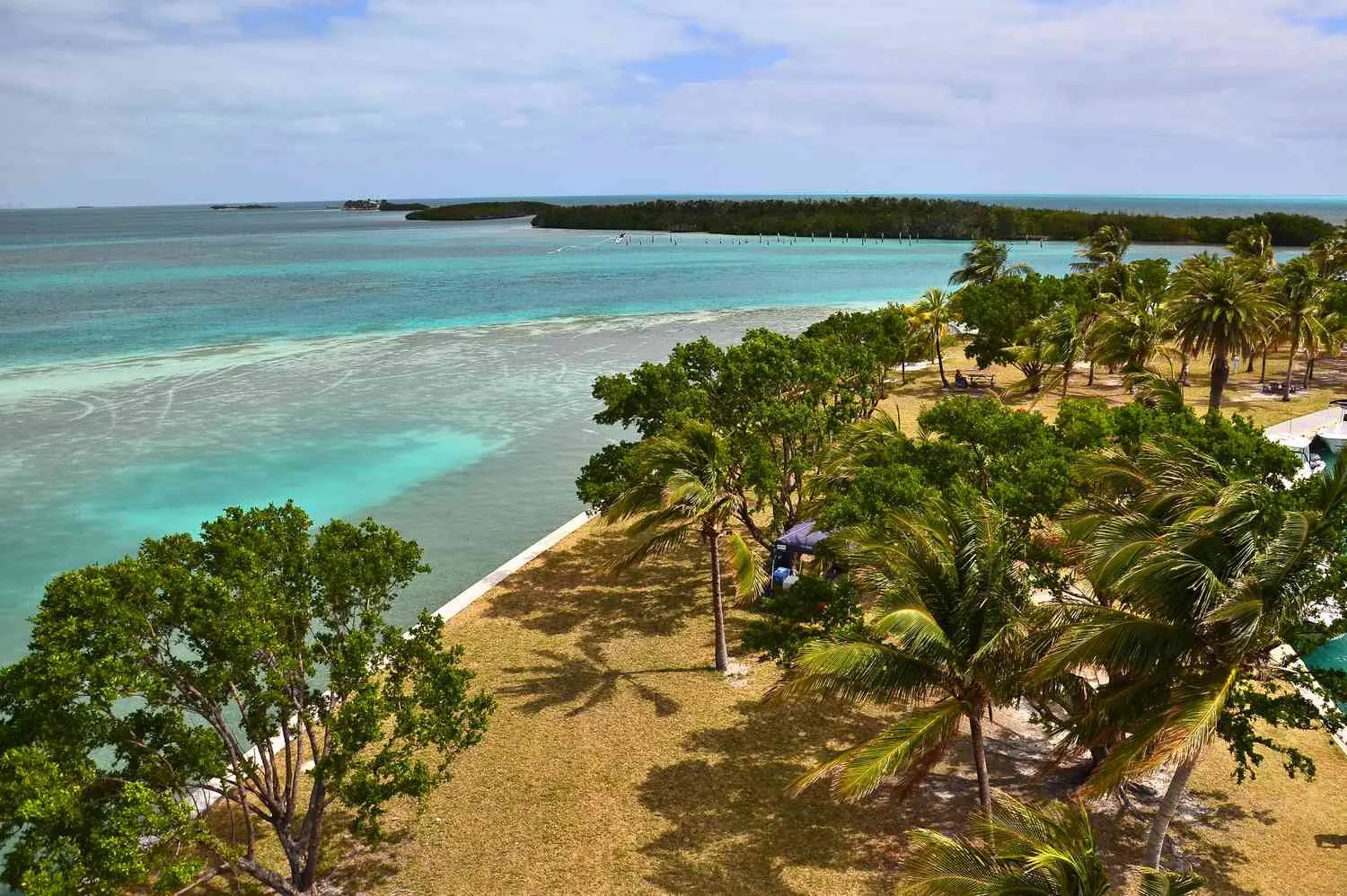
>> Read More: Restaurants near Biscayne National Park
Biscayne National Park in the Winter (December to February)
From December to February, winter in Biscayne National Park weather is characterized by mild and dry conditions, making it a popular time for visitors seeking to escape colder climates. During these months, average daily highs range from 73°F (23°C) in December to about 75°F (24°C) in February. At night, temperatures drop to a refreshing 63°F (17°C), making for a comfortable and enjoyable experience in the park.
Because of the pleasant weather, I find that winter is peak tourist season in Biscayne National Park. With minimal rainfall, averaging about 1.6 inches in December and rising slightly to 2.6 inches in February, you can plan outdoor activities without worrying about unexpected showers. Sounds great, right?
The dry conditions and comfortable temperatures create ideal conditions for a range of activities such as kayaking, snorkeling, and hiking. Winter also offers clear skies and lower humidity, enhancing the overall experience and allowing you to truly appreciate the park’s natural beauty.

Best times to visit Biscayne National Park
When I think about the weather in Biscayne National Park, I think of winter as the best time to visit Biscayne National Park. From December to February, the park experiences mild temperatures, low humidity, and minimal rainfall, creating ideal conditions for outdoor activities and exploration.
I have experienced this wonderful weather and I want to share it with you. If you love outdoor activities, winter is the perfect time to enjoy them in Biscayne National Park. You can comfortably hike on the park’s trails, explore the mangroves by kayak, and enjoy snorkeling or diving in the clear blue waters. The low humidity and lack of high temperatures make these activities more enjoyable than in the summer.
Winter is also a great time to observe wildlife in Biscayne National Park. Many species become more active and easier to see in the cooler temperatures. You can spot a wide variety of birds, including those that migrate to the park during the winter. The clear skies and mild weather make wildlife viewing easier.
Due to the ideal weather conditions, winter is peak tourist season in Biscayne National Park. Visitors from colder climates tend to flock to the park to escape the cold of winter and enjoy the warm, sunny weather. While this means the park can be more crowded during this time, the weather is definitely the best for visiting and experiencing all that Biscayne National Park has to offer.
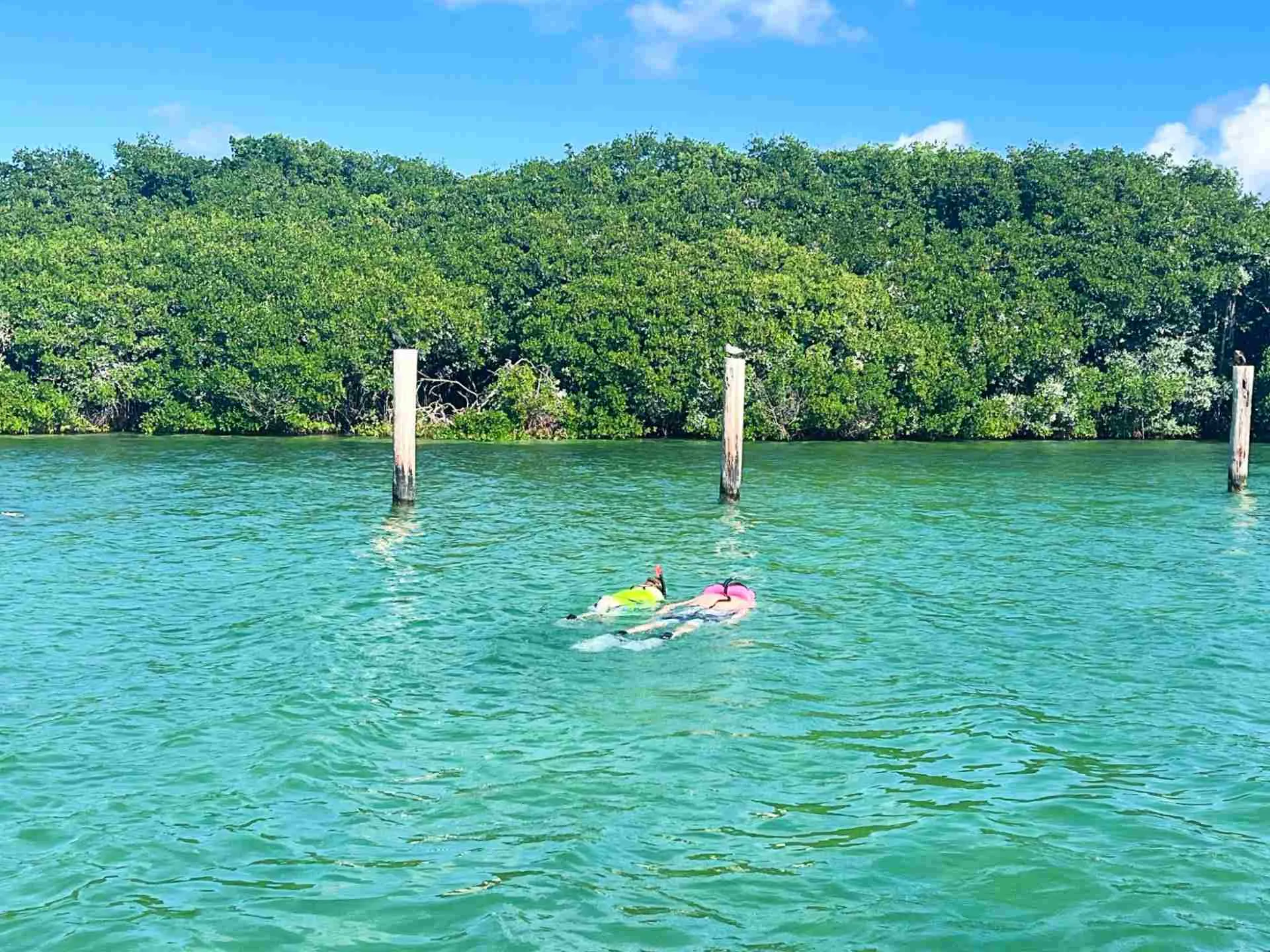
What activities are in each season in Biscayne National Park?
As you can see, Biscayne National Park offers a variety of activities throughout the year. Each season, depending on the Biscayne National Park weather, offers unique opportunities to explore and enjoy. I will suggest you activities for each season. A detailed guide on things to do in Biscayne National Park that you will hopefully enjoy.
>> Read More: Things to do in Biscayne National Park
Spring Activities in Biscayne National Park Weather
Spring is a great time to hike in Biscayne National Park. Temperatures are warm but not too hot, making it comfortable to explore the trails in the park. Popular trails include the Convoy Point Jetty Trail, which offers great views of the bay and bird watching opportunities.
Biscayne National Park weather in spring is also a great time for bird watching, as many migratory birds return to the area. You can spot many species, including shorebirds and songbirds, making this a great season for birdwatchers.
As the weather warms up, spring is also a great time to paddle through the park’s seagrass beds and mangroves. Kayaking allows visitors to explore the diverse ecosystems up close, and guided Biscayne tours are available for those who want to learn more about the area’s ecology. Scuba diving is also popular during this time of year.
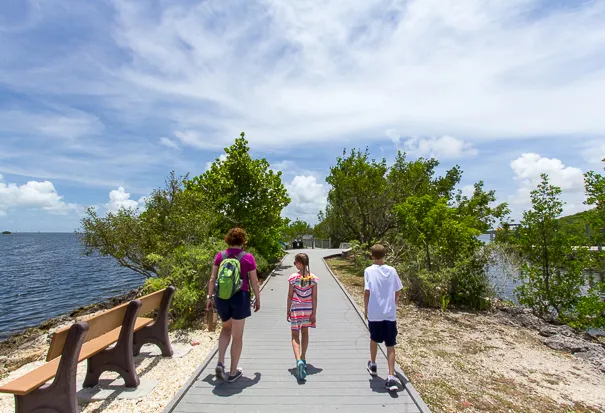
Summer Activities
Summer is the peak season for water activities. Visitors can snorkel, scuba dive, and paddleboard in the warm waters of Biscayne Bay. The park’s coral reefs are vibrant and teeming with life, making this an ideal time to explore underwater.
Biscayne National Park weather in summer is also a great time for fishing, as there are many active fish species. Anglers can fish from a boat or from shore, with the chance of catching snapper, grouper, and more.
For those looking to get out into nature, camping on islands like Elliott Key and Boca Chita Key is a popular summer activity. Campgrounds offer the chance to enjoy the park’s natural beauty and experience wildlife up close.
Finally, during the summer months, the park often hosts ranger-led evening programs, such as stargazing and night hikes. These programs provide unique insights into the park’s nocturnal wildlife and the stars above.

Fall Activities in Biscayne
If you visit Biscayne National Park in the fall, don’t miss out on wildlife watching, as many animals are active during this time of year. With the heat of summer winding down, fall is also a great time to kayak and paddleboard (actually, it’s great all year round). Calm waters allow you to explore mangroves and seagrass meadows in peace, and guided tours are available for those who want a more educational experience.
As temperatures cool, hiking and fishing also become more enjoyable in the fall. The trails in the park offer great views and opportunities to see the changing landscape. Cooler weather can make for more pleasant fishing, and the fall months are often less crowded.
>> (Review) 5+ Best Biscayne National Park Boat Tours
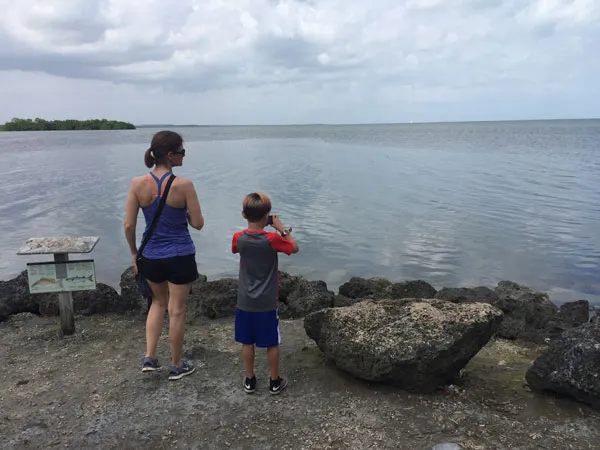
Winter Activities in Biscayne National Park Weather
The mild winter temperatures create ideal conditions for outdoor activities such as kayaking, snorkeling, and hiking. You can comfortably explore the mangroves by kayak, enjoy snorkeling or diving in the clear blue water, or hike the park’s trails. The cool, comfortable weather makes these activities more enjoyable than ever.
Many animals seem to be easier to see in the cooler temperatures. You can spot a variety of birds, including those that migrate to the park during the winter. You can also see other animals such as alligators, dolphins, and other mammals.
I have experienced winter in Biscayne National Park weather and I can say that it is the perfect time to explore this national park. Great weather, fun outdoor activities and abundant wildlife viewing opportunities make winter an ideal time to visit Biscayne National Park.

10 Day Weather in Biscayne National Park
For reference, I’ll leave you here the average Biscayne National Park weather for the last 10 days (as of this writing). The weather is usually pretty similar, so you can give it a try.
- Friday, November 15: Partly Cloudy
- Saturday, November 16: Overcast
- Sunday, November 17: Overcast
- Monday, November 18: Partly Cloudy
- Tuesday, November 19: Partly Cloudy
- Wednesday, November 20: Patchy rain nearby
Current conditions show a temperature of 73°F (22°C) with clear skies and humidity at 79%.
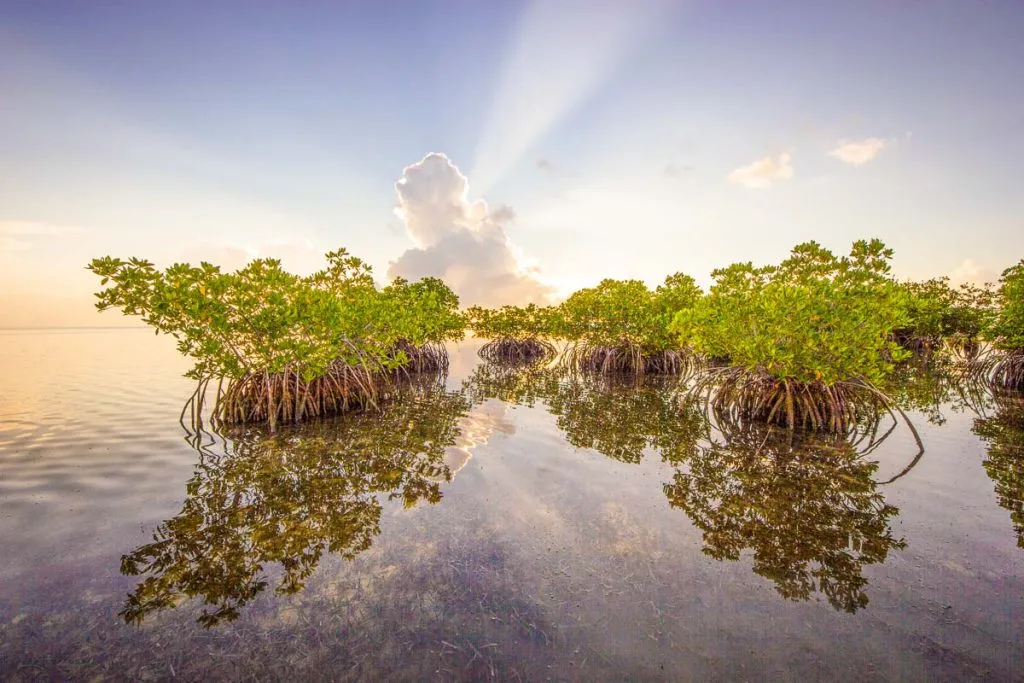
>> One Day in Biscayne National Park
FAQs about Biscayne National Park Weather
What are the common types of weather in Biscayne National Park?
Biscayne National Park typically experiences warm, sunny weather year-round, with a subtropical climate. Winters are mild and dry, while summers are hot, humid, and often accompanied by afternoon thunderstorms. The park also experiences a wet season from May to October, with higher rainfall during these months.
Is Biscayne National Park affected by hurricanes?
Yes, Biscayne National Park is located in an area that can be affected by hurricanes, particularly during hurricane season, which runs from June to November. Visitors should monitor weather forecasts and be aware of any tropical storms or hurricanes that may impact their plans.
Where to stay in Biscayne National Park in Winter?
While there are no accommodations directly within Biscayne National Park, visitors can find nearby hotels in Biscayne options in Homestead and Florida City. These areas provide convenient access to the park. For a more immersive experience, camping is available on certain islands within the park, such as Elliott Key and Boca Chita Key, but reservations are required.
Conclusion
As I conclude my journey through the Biscayne National Park weather, I hope you’ve enjoyed the ride as much as I have. From the warm and sunny winters to the hot and humid summers, each season brings its own unique charm to this incredible national park.
Whether you’re a nature lover, an adventure seeker, or simply looking for a relaxing getaway, Biscayne National Park has something for everyone. And with its diverse weather patterns, you’re sure to find the perfect time to visit that suits your style.
So, if you’re ready to experience the beauty and wonder of Biscayne National Park, start planning your trip today! Thanks for joining me on this journey, and I hope to see you on the trails of Biscayne National Park soon!
>> Read More:

